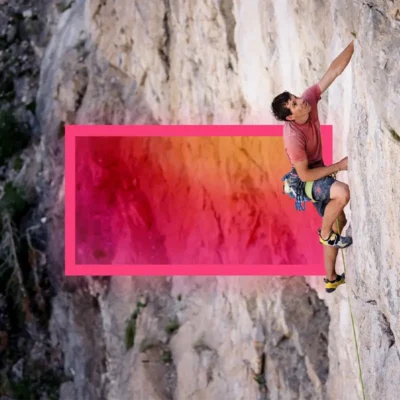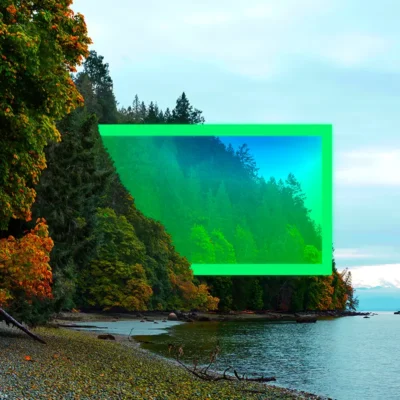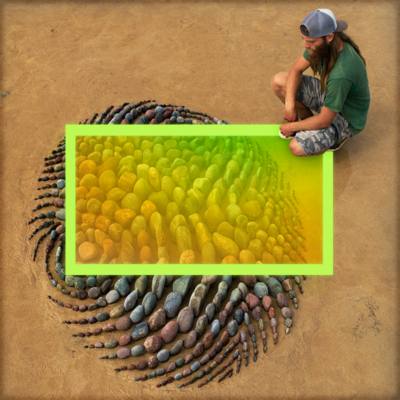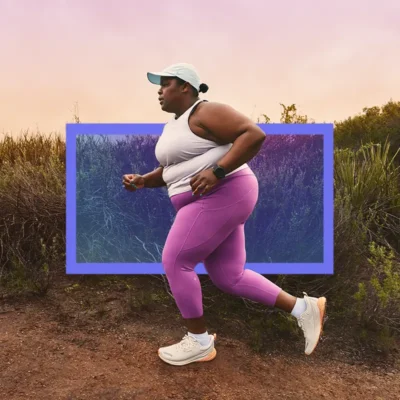The perfect photograph I never took
Imagine: A photojournalist on a steep and wet hilly climb, a camera around his neck. Row upon row of mountains stretched to the horizon, lightly covered in mist. Then the clouds part and in the distance: a family of silverback gorillas. But these gorillas are wild, unpredictable. For them, humans are danger. Getty’s John Moore shares a Meditative Story of entering a scene he’s always dreamed of capturing – and what happens when our expectations meet reality. Photo credit: Amy Harris.

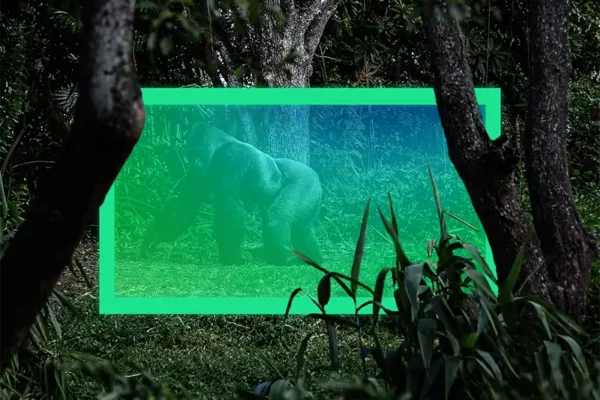
Table of Contents:
Transcript:
The perfect photograph I never took
JOHN MOORE: I imagine the splendid scene up in those mountains. Surrounded by lush forest, the gorillas amble out into a clearing and gaze into the vista. The surrounding hills come in and out of view as a gentle breeze pushes the mist through the trees and dense underbrush. In my mind, the photograph is spectacular.
ROHAN GUNATILLAKE: As a Special Correspondent for Getty Images, John Moore’s work has taken him all around the world, often to places of great conflict and human drama. Today, we’ll hear John share a story about the pursuit of a photograph that literally brought him to his knees.
In this series, we blend immersive, first-person stories with mindfulness prompts to help you recharge at any moment of the day. I’m Rohan, and I’ll be your guide for Meditative Story. Some of the prompts may feel really right for you. Others, less so. That’s okay. And now onto the story.
John’s experience has an intensity to it, and that may make it a less obvious choice for Meditative Story, but mindfulness doesn’t just mean relaxation. It’s also about vibrancy and aliveness. And now, let go of the need to do anything in particular. Ready to hear John’s story.
The body relaxed. The body breathing. Your senses open. Your mind open. Meeting the world.
MOORE: In 1994, I travel to eastern Congo to photograph hundreds of thousands of Hutu refugees living in sprawling camps. I base myself in the Congolese town of Goma, which straddles the border with Rwanda. My hotel is modest. I stay in a simple one-floor structure. Each room with a mosquito net, hanging above single beds. The rooms are arranged around a common area with worn sofas.
The place has been taken over by international journalists, all there to cover the story. I process my film in a bathroom I fashion into a darkroom by covering the window. I mix my chemicals in a contraption known as the “road warrior.” It keeps the developer at an even 100 degrees. Every day, I return covered in a stench from the squalid camps and go into that darkroom. I emerge 20 minutes later smelling of film-developing chemicals, a modest improvement.
One day, I photographed a barefoot family, their gray clothes in tatters, as they walked over the black jagged lava, which forms the desolate ground there. They were scouring the area for cooking wood and further reducing wildlife terrain. Beyond them in the distance, smoke rose from the volcanic crater of Mount Nyiragongo, in Virunga National Park.
That night, as I finish work I head to the hotel roof. I watch the volcano’s orange glow. It brightens and dims from the bubbling lava below. The park is also the largest habitat for endangered mountain gorillas; it gets me thinking.
I know something of these creatures. Like many people, I’ve seen the film “Gorillas in the Mist”. As I gaze at the pulsing orange glow, I think of how beautiful it would be to photograph the gorillas in their natural habitat after my month covering the ravages of war.
With the movie in mind, I imagine the splendid scene up in those mountains. Surrounded by lush forest, the gorillas amble out into a clearing and gaze onto the vista. The surrounding hills come in and out of view as a gentle breeze pushes the mist through the trees and dense underbrush. In my mind, the photograph is spectacular.
I know as a photojournalist that the strongest pictures are often a combination of preparedness and luck. You can have all of one, but without a little of the other, the image never finds its way into your camera.
The next day, I cross the border from Congo into Rwanda. I meet a veteran guide, Jean Bosco, who agrees to take me. It’s his first trip back into the jungle since the military conflict began months before.
Together, we climb into a beat-up Land Cruiser, its back seats just a pair of benches that run along the insides of the vehicle. We drive into the foothills, higher and higher, surrounded by beautiful terraced hillsides. After a few hours, we reach the end of the road and the start of a long footpath. The trailhead forms a small clearing where the grass is tall.
This time, as we start walking, we go almost immediately into a vertical climb. Dark clouds move in, and I struggle to keep from falling. Rain and wind lash my poncho as I try to keep my gear dry. My cameras, light at the outset, become heavier with every step.
GUNATILLAKE: Does it feel like you’re carrying a lot of baggage right now? How are your shoulders? Take a moment to roll them, rolling your shoulders back to free up some tension. Perhaps that feels a little lighter.
MOORE: After at least three hours of this steep, slippery climb, we meet another local guide, who has just returned from the gorilla habitat. He warns us, sharply: These gorillas are different from the ones on the Congo side. These gorillas have been through war. These gorillas have learned that humans are dangerous.
Undeterred, I ask the local guide to take me as close as possible to any gorilla families still in the area. We set out along a wet mountain path. I picture the image I want. As if on cue, the sky briefly clears and the perfect background appears – row upon row of mountains stretched to the horizon, lightly covered in mist. I look up to an adjacent hill and there they are – a family of mountain gorillas striding together along the ridge. It’s a group of four, including two adolescents, a larger female, and a giant silverback male, his high-pitched forehead bobbing along with his casual gait.
I ask my guide to take me up so that I can photograph them with my wide lens up close, framed by that incredible view. He arches an eyebrow and shakes his head. “They’re wild again,” he says “and unpredictable.” I look back to the hill and they’re still there. It’s the gorilla photo I imagined while back in Congo.
I hand him my camera bag and ask him to wait for me. I start climbing the slope. It doesn’t seem steep at first, but soon I’m crawling up, grasping at vines and roots, trying to keep my camera from slinging into the muck. As the grade becomes steeper, I begin to slip down a step, and then claw my way back, just a bit higher than before. Time slows as the foliage comes loose in my hands. It seems as though I’m crawling in place. I dig the toes of my boots into the hillside and I begin to make headway. By the time I reach the ridge, I’m soaked with sweat, caked in mud.
As I stand, I quickly see the situation has changed. The female and children of the family are no longer visible. Standing alone, just 30 yards away, the silverback male remains, waiting for me. He stares at me and I realize that I may have miscalculated.
In my disheveled terror, I lower myself into a crouch, as close to the ground as possible. I stare down and begin to clear my throat, making low grunting sounds. This sounds submissive to the gorillas. I have no idea how long I hold that position cowering atop that mountain, staring at the ground before me, but it seems like a long time. In my peripheral vision, I see movement. Suddenly, one and then two enormous hairy feet step into my lowered field of view. I increase my grunting exponentially as the feet seem to fill my vision.
And then I hear a faint, rhythmic beating. At first I think it’s the sound of my own heart, bursting free. But then the sound grows louder. It seems more like a thumping. I risk it all and raise my eyes. The gorilla’s hairy legs nearly fill my view, almost touching my face. As I tilt my head up, I behold an unforgettable scene: The silverback mountain gorilla is standing over me, pounding his chest, his mouth wide open, teeth bared, head thrown backward, wide eyes staring skyward.
King Kong. The iconic alpha male.
I quickly lower my head before making eye contact with him. I again focus upon the hairy feet before me. Then, in an instant, he turns on his heels and his feet leave my field of view. I venture a glance as he saunters away to rejoin his family.
With a second chance at life, I move on that slope with such speed that I begin to tumble down, cartwheeling to the bottom, covered in mud. I stagger towards the tree line and there’s my guide, who’s watched the entire spectacle from a safe distance. As I see his smiling face, amused and astounded in equal measure, it occurs to me – I came a very long way with a plan to see gorillas in the mist. That day I left the mountain without a single photograph.
Preconceived notions, either for a photograph or what I imagine as an ideal experience, yes, can motivate me to book that flight, drive that long road, or climb that steep hill. But so often these notions are just a creation of my imagination – or maybe a scene I once saw in a movie.
Twenty years after my visit, the mountain gorilla population has doubled, due to a savvy combination of conservation and sustainable tourism. And I still don’t have that photograph. The memory is worth so much more.
Rohan’s closing meditation
GUNATILLAKE: So, on the top of that ridge, even though the light conditions were ideal, the backdrop perfect, and John’s plans meticulous, it really made no difference to the silverback, did it? He was going to express his animal wildness, and all John could do was bear witness.
He spent a lot of effort to get his shot and even though he ended up leaving without it, it was the experience and the memory of that experience that stays with him to this day. More often than not, things are like that aren’t they? In our heads, we have one idea of how life’s going to turn out and in reality it turns out completely differently. And while not all of us might be faced with the majestic sight of a silverback in full chest-beating and heart-pumping flow, when we, like John, raise up our eyes, we too can experience some remarkable things. Unplanned, unmediated.
Meditation is the same. When starting out, we buy into the romance and think that just by sitting down and closing our eyes, somehow our minds are magically going to drop into some kind of beautiful state, full of rainbows and majestic lakes, effortlessly still, blissful even.
But it’s not really like that. Certainly not at first. What turns up is the silverback, the wild, raw, power of the mind. Thoughts, ideas, feelings, energy – untamed. They don’t drop away just because we’re doing this thing we’re calling meditation. Our plans make no difference to the silverback energy of the mind. It can be overwhelming, powerful. And our job is to be there while it beats its chest. Fully there, to bear witness. So let’s do that.
But before we slide into meditation, take a moment. What do you think the little meditation we do together is going to be like? What are your expectations? What do you think is going to show up?
Ok, now, if it’s safe and comfortable to close your eyes you can do that. And no worries if not. Let your body be in whatever position it is. Inviting comfort, inviting relaxation.
And, if you like, you can imagine, you can visualize doing what John did. Slowly crawling up the mountainside, holding onto roots and stumps, scrambling up the slope in the damp, to see what is there to be experienced.
What do you find here? Looking inside, looking at your mind, your heart, what animal energy are you most aware of? Can you witness it, bow down to it, be with it, just as John did?
For me, as I close my eyes and sense into what’s happening inside me, there’s a sense of vibration, a sense of power even. I thought I’d be feeling calmer but what’s actually happening is this. Not quite as loud as a silverback beating its chest, but powerful all the same. A sense of restlessness, energy which needs an outlet.
What is it for you? What energy can you bow down to, bear witness to?
Maybe it’s the chaotic chatter of the thinking mind, like the tumbling gorilla toddlers from before? Or maybe it’s the quiet but watchful mind of those toddlers’ mother. If you like this metaphor of your mind as some kind of animal energy, then do use it. If it doesn’t work for you, that’s ok too. What matters is that you look at and experience what’s happening inside you directly, without filters, just as it’s presenting itself to you in this moment. So take a look. What energy is here?
However we want our minds to be, however we want our meditation to be, more often than not life has other plans. So even though like John we can have the movie version of what will happen in our minds – and go to great lengths to realize that fantasy – even if those plans never materialize, what does can be truly magical. The loud magic of a silverback gorilla alpha-male-ing you down or the quieter, simpler magic of being present with whatever is here.
But to know that magic, we have to surrender. We have to let go of what we want the moment to be like, what we want our mind to be like, and be with how it actually is. To surrender and raise our eyes.


